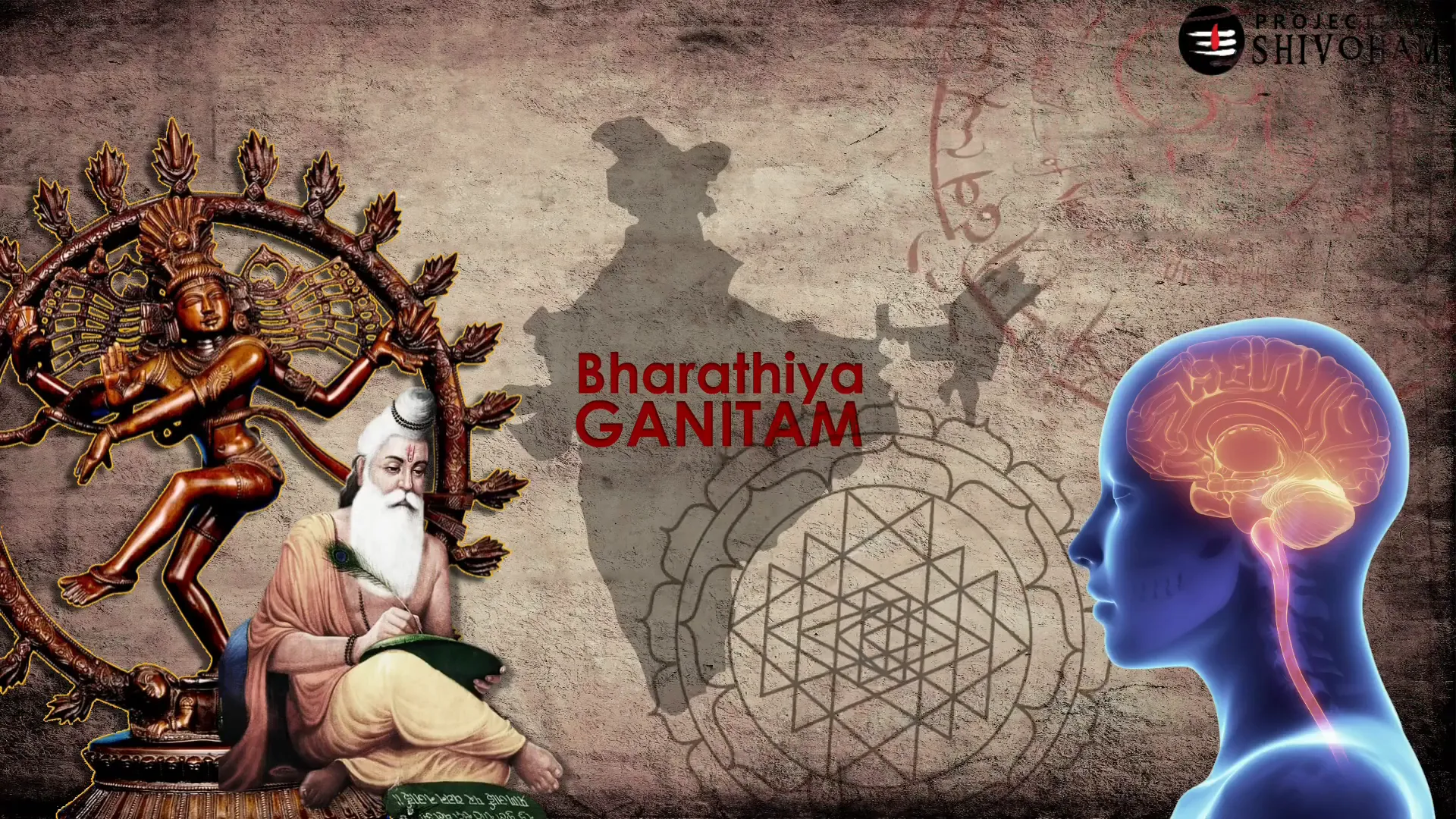In this first episode of the Bharatiya Ganitam series, we delve into the rich heritage of mathematics in ancient India, exploring the factors that contributed to the decline of its educational systems and the mindset needed to appreciate its historical significance. Join us as we unravel the historical context, key figures, and philosophical foundations of Indian mathematics.
Table of Contents
- Introduction to Ancient Bharat’s Educational Landscape
- The Question of India’s Scientific Contributions
- Identifying the Downfall of Ancient Education
- Four Main Reasons for Decline
- The Role of Pseudo Brahminical Hostility
- Understanding the Concept of Brahmin
- The Chaturvarna System Explained
- Caste and Education: A Misunderstanding
- The Importance of Ganita Shastra
- Ganita and Spirituality: A Cultural Connection
- Jyotisha Shastra: The Roots of Ganita
- The Interplay of Faith and Mathematics
- The Calculation of Navagrahas
- The Historical Context of the Hindu Number System
- The Global Spread of Bharatiya Mathematics
- Myths and Misconceptions About Indian Mathematics
- The Objective of Bharatiya Ganitam Series
- The Mindset for Understanding Mathematics
- Critical Thinking and Inquisitive Learning
- FAQs about Bharatiya Ganitam
Introduction to Ancient Bharat’s Educational Landscape
Ancient Bharat was a beacon of knowledge, with a rich tapestry of educational institutions that flourished for thousands of years. Renowned universities dotted the landscape, serving as hubs of learning across various disciplines. This vibrant educational culture was not merely about rote learning; it fostered critical thinking, innovation, and a deep understanding of the world.
From the revered Nalanda and Takshashila universities to numerous smaller centers, the pursuit of knowledge was deeply embedded in the social fabric. It was a land where scholars from diverse backgrounds gathered to exchange ideas, pushing the boundaries of science, philosophy, and mathematics. Yet, despite this illustrious legacy, the question arises: what happened to this thriving educational system?
The Question of India’s Scientific Contributions
Despite the profound educational legacy, Bharat’s scientific contributions in the last two millennia seem sparse. This paradox raises an essential inquiry into the evolution of knowledge systems in ancient India. Why, in a land teeming with scholars and institutions, did the scientific advancements diminish over time?
To understand this, we must examine the socio-political changes and ideological shifts that took place. The historical context reveals a complex interplay of factors that led to the decline of a once-thriving intellectual environment.
Identifying the Downfall of Ancient Education
The downfall of Bharat’s educational system can be attributed to several interconnected reasons. These factors not only hindered the growth of knowledge but also created an environment hostile to intellectual pursuits.
Four primary reasons stand out:
- Pseudo Brahminical hostility in education.
- Islamic invasions resulting in the destruction of universities.
- Imposition of the English education system by the British.
- Pseudo secularism and political agendas that failed to revive the ancient education system.
While the last two reasons are largely historical, the first and fourth points require introspection regarding our own responsibilities in preserving and promoting knowledge.
Four Main Reasons for Decline
As we delve deeper, understanding the four main reasons for the decline can shed light on the broader implications for society. Each reason paints a part of the picture that illustrates the erosion of a once-great educational framework.
Pseudo Brahminical Hostility
The term “pseudo Brahminical” refers to those who, under the guise of Brahminical authority, created barriers to education. This hostility fostered an environment where knowledge was restricted to a select few, excluding large segments of the population. The original intent of education—universal access to knowledge—was lost in the process.
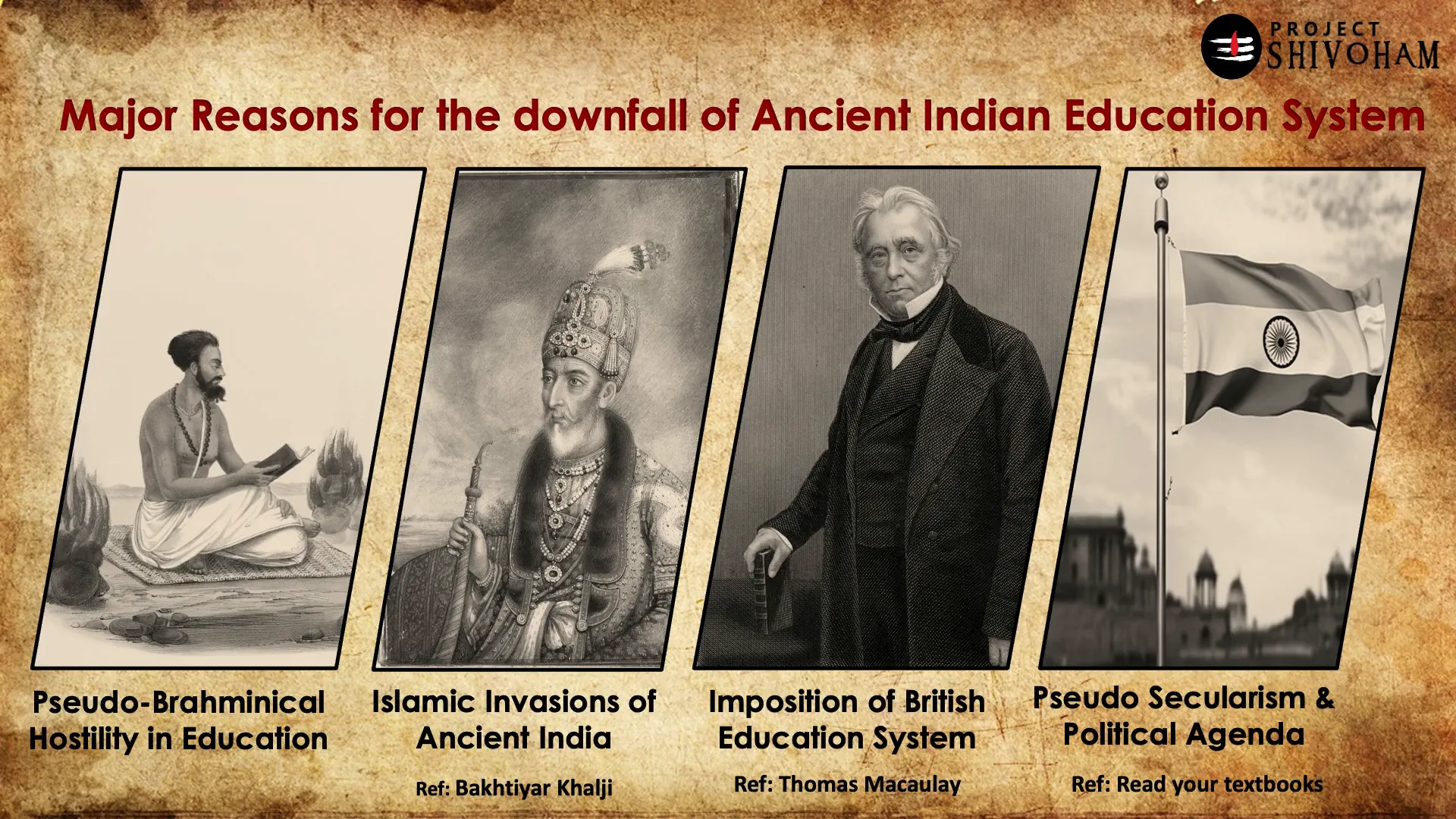
Islamic Invasions
Islamic invasions led to the destruction of numerous educational institutions. The systematic dismantling of centers of learning resulted in a significant loss of knowledge and cultural heritage. This period marked a turning point where the educational landscape began to shift dramatically.
Imposition of English Education
The British colonial rule introduced an English education system that prioritized Western ideologies over indigenous knowledge. This shift not only marginalized traditional educational practices but also created a disconnect between the society and its rich intellectual heritage.
Pseudo Secularism and Political Agendas
In contemporary times, pseudo secularism has further complicated the revival of ancient educational frameworks. Political agendas often overshadow the need to reconnect with Bharat’s intellectual roots, pushing aside the rich philosophical and scientific legacies in favor of a sanitized, one-size-fits-all approach.
The Role of Pseudo Brahminical Hostility
Understanding the role of pseudo Brahminical hostility is crucial in comprehending the decline of ancient education. This hostility manifested in various forms, creating divisions based on social status rather than merit and knowledge.
As the definition of who could access knowledge became skewed, many capable individuals were denied the opportunity to learn and contribute. This not only stifled innovation but also led to a gradual erosion of the diverse intellectual traditions that once thrived in Bharat.
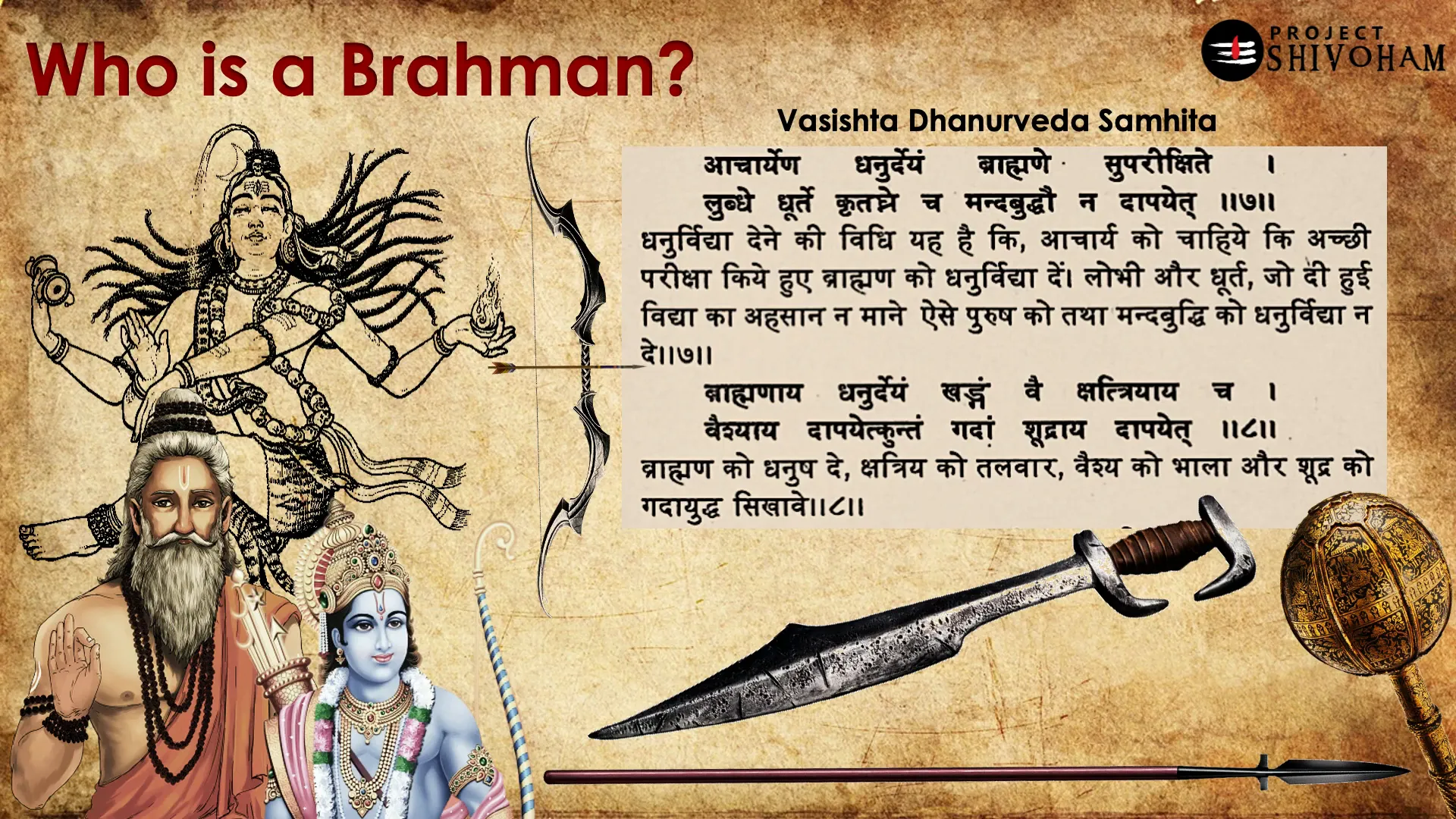
Understanding the Concept of Brahmin
To address the pseudo Brahminical hostility, we must first understand the essence of what it means to be a Brahmin. Traditionally, a Brahmin is not defined by birth but by qualities and knowledge. This notion emphasizes that anyone who seeks knowledge and possesses noble qualities can be considered a Brahmin.
The ancient texts, such as the Vasistha Dhanurveda, illustrate this concept clearly. It is not the caste but the individual’s qualities that determine their role in society. This understanding is crucial in dismantling the barriers created by pseudo Brahminical attitudes.
The Chaturvarna System Explained
The Chaturvarna system, often misunderstood, is based on the qualities and professions of individuals, rather than their birth. Each category—Brahmana, Kshatriya, Vaishya, and Shudra—has specific roles that contribute to societal harmony.
For instance, Vasistha Maharishi’s teachings highlight that different individuals are suited for different forms of knowledge and skills. A Brahmana learns archery, a Kshatriya wields a sword, a Vaishya uses a spear, and a Shudra employs a mace. This classification is based on psychological strengths and skills, not on caste or lineage.
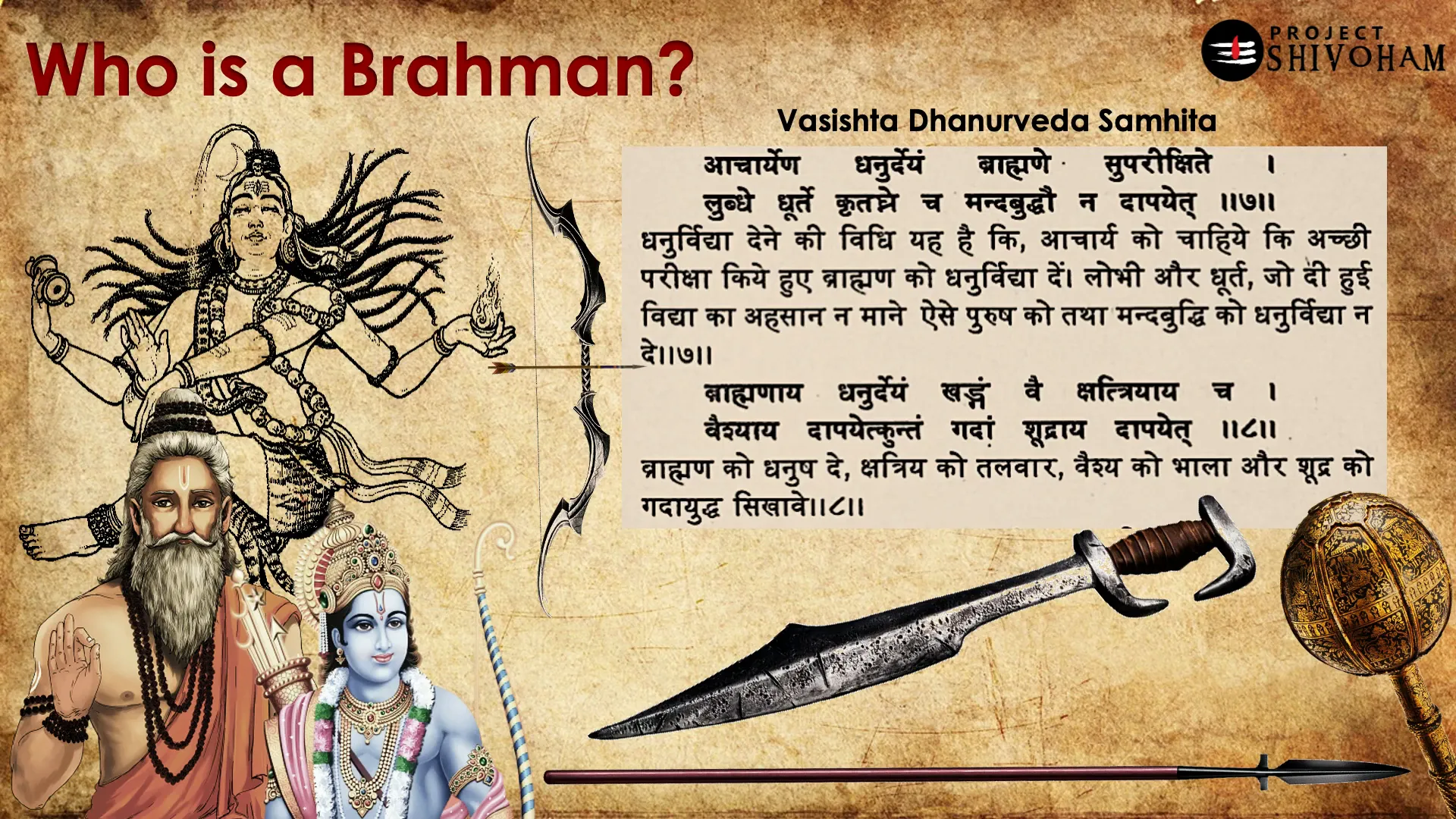
Recognizing this distinction is vital for understanding how ancient Bharat fostered a culture of knowledge that was accessible to all, regardless of social standing. The emphasis was on personal qualities and the pursuit of knowledge, which should be the foundation of any educational system.
Caste and Education: A Misunderstanding
The perception of caste in the context of education has often led to misconceptions. The ancient education system in Bharat was designed to be inclusive, based on qualities rather than birth. This foundational principle was meant to allow anyone, regardless of caste, to pursue knowledge and excel in various fields.
However, over time, the original intent became distorted. Pseudo Brahminical attitudes created barriers, restricting access to education for many. This misunderstanding of caste dynamics hindered the true spirit of learning, where knowledge was meant to be shared and cultivated among all individuals.
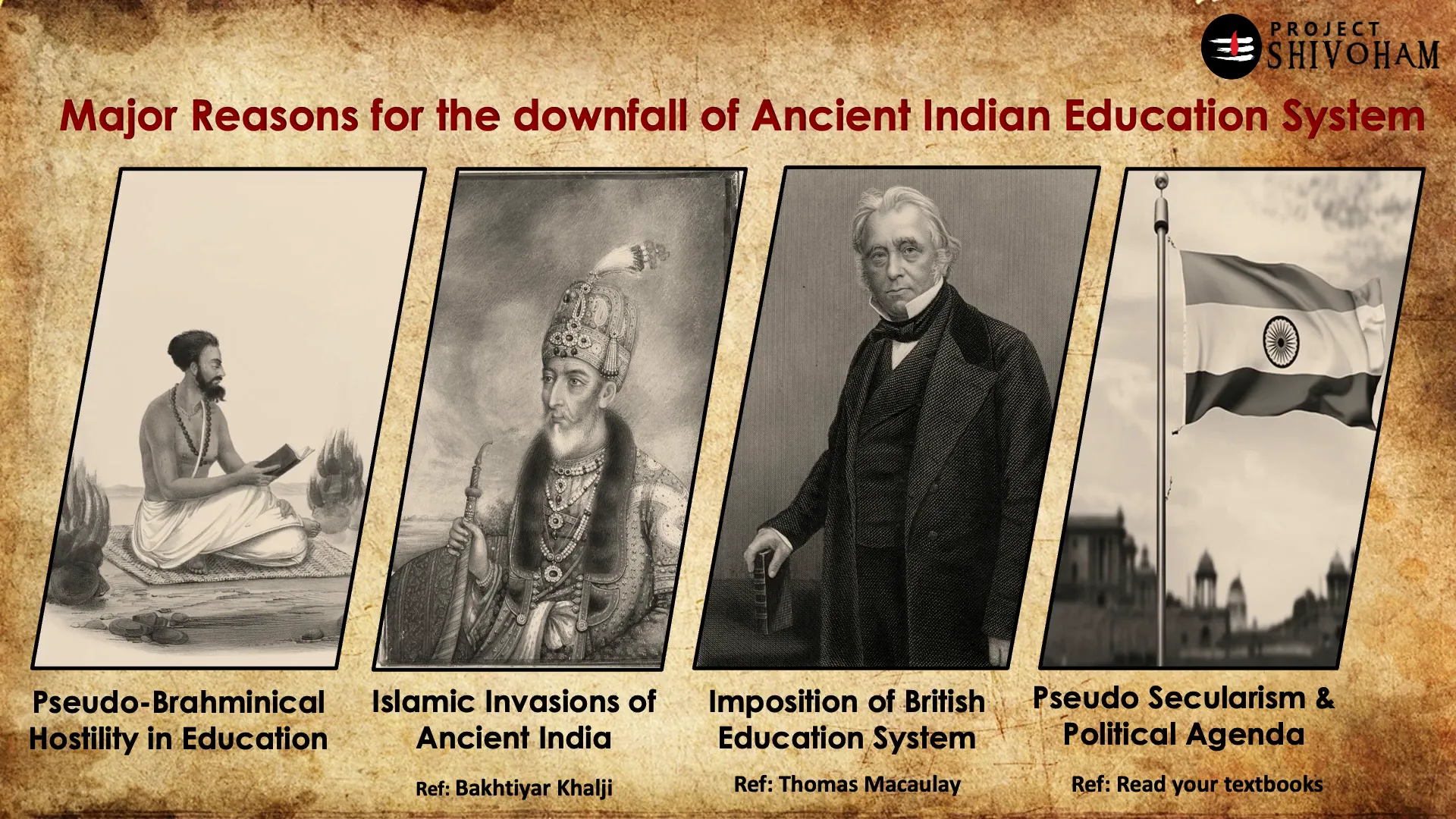
The Importance of Ganita Shastra
Ganita Shastra, or the science of mathematics, is more than mere calculations. It embodies the principles of reasoning, logic, and the philosophical underpinnings of existence. In ancient Bharat, mathematics was intertwined with various aspects of life, including spirituality and cosmology.
Understanding Ganita Shastra is essential, as it not only facilitates practical applications but also enhances critical thinking. This discipline encourages students to explore abstract concepts, fostering a more profound understanding of the universe.
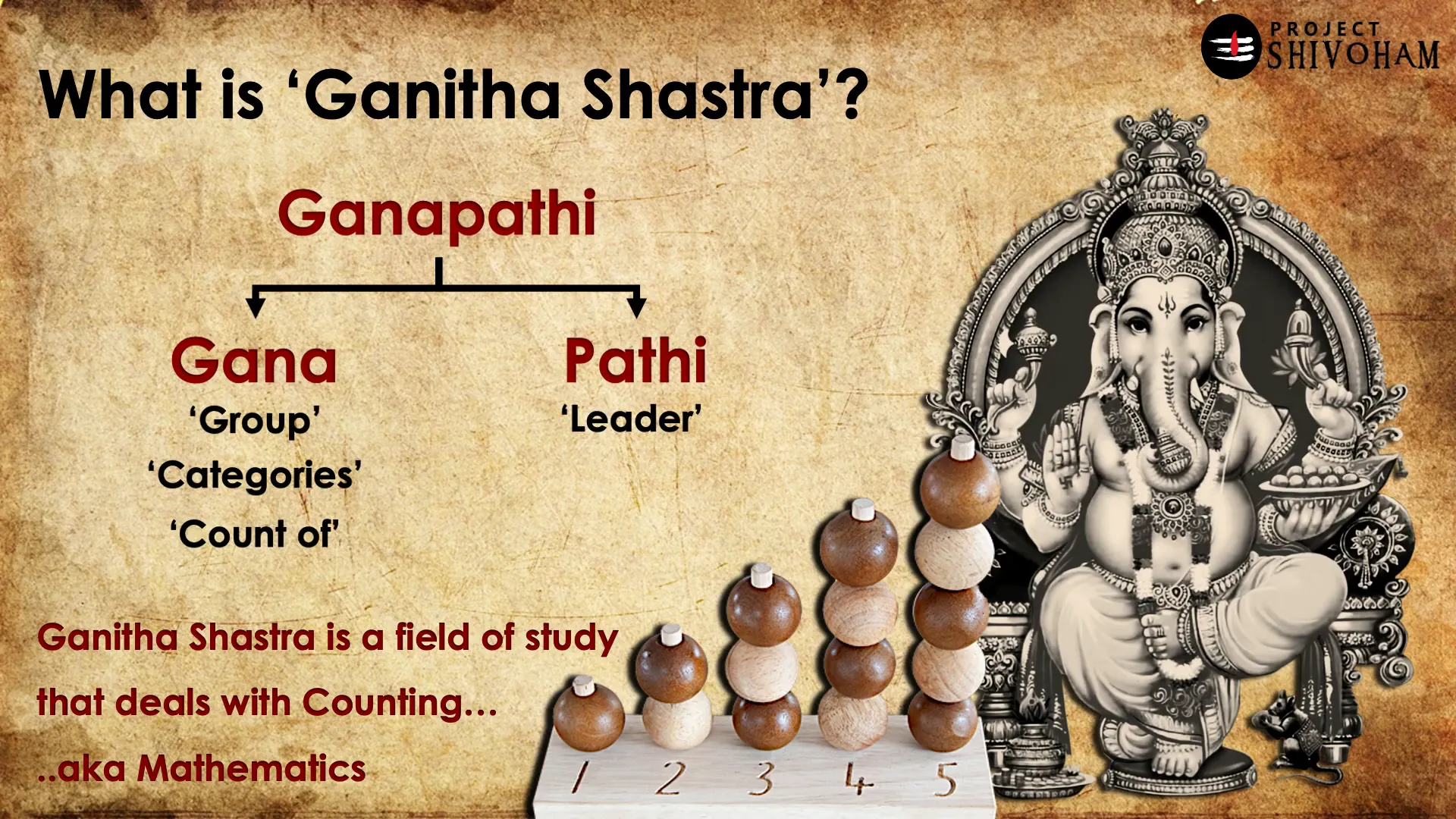
Ganita and Spirituality: A Cultural Connection
The connection between Ganita and spirituality in Bharat is profound. Mathematics was not merely a tool for calculations but a means to comprehend the cosmos. The ancient scholars viewed numbers and equations as reflections of universal truths.
This perspective fosters a holistic approach to education, where mathematics serves as a bridge between the material and spiritual realms. By appreciating this connection, students can develop a more enriched understanding of both disciplines.
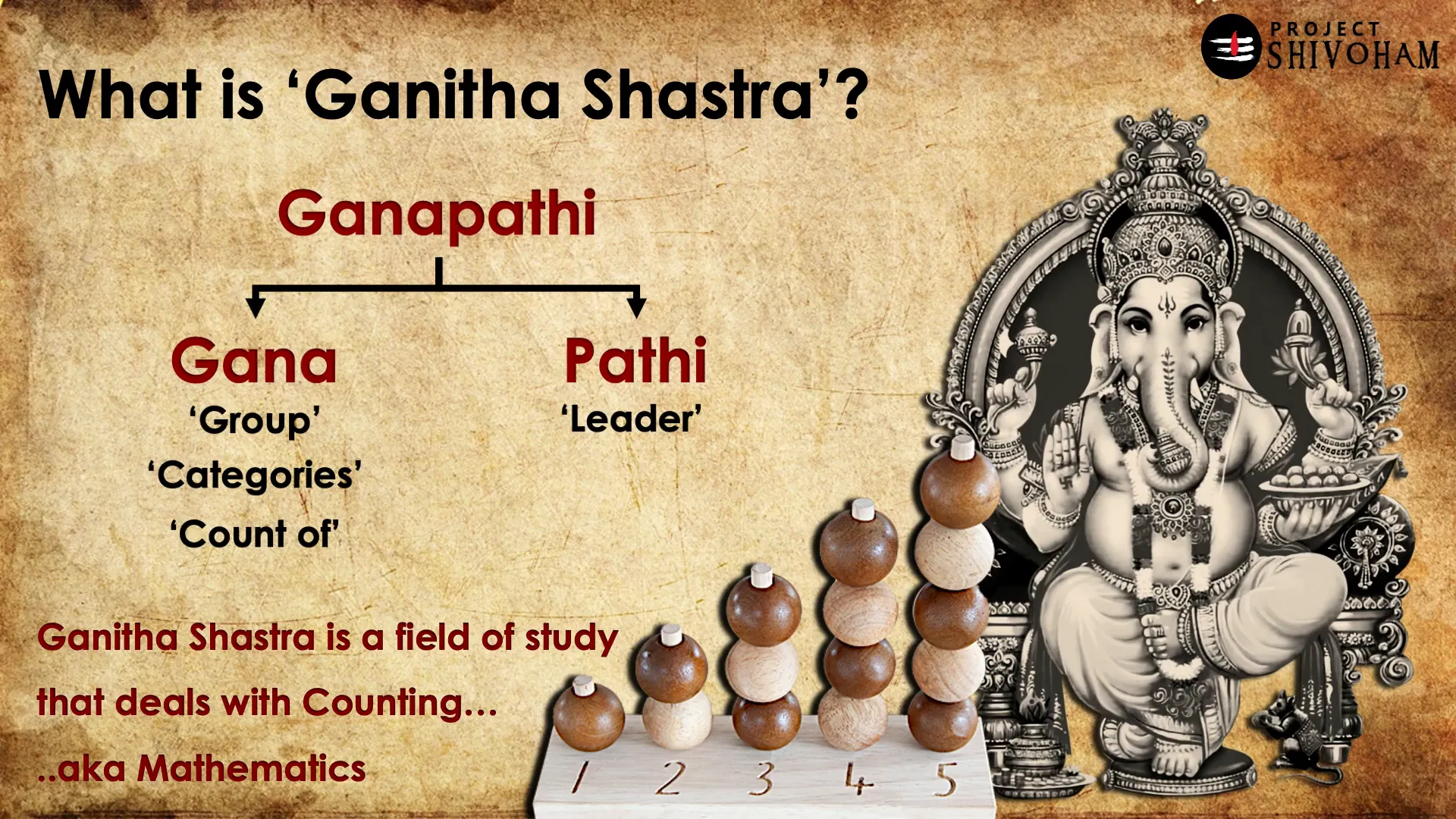
Jyotisha Shastra: The Roots of Ganita
Jyotisha Shastra, or Vedic astrology, serves as a crucial foundation for Ganita Shastra. This ancient science emphasizes the significance of celestial bodies and their impact on earthly events. The calculations related to planetary positions require a deep understanding of mathematics.
Through Jyotisha, scholars developed intricate methods of computation that laid the groundwork for various mathematical concepts. The interplay between these two disciplines highlights the importance of a comprehensive understanding of ancient Indian sciences.
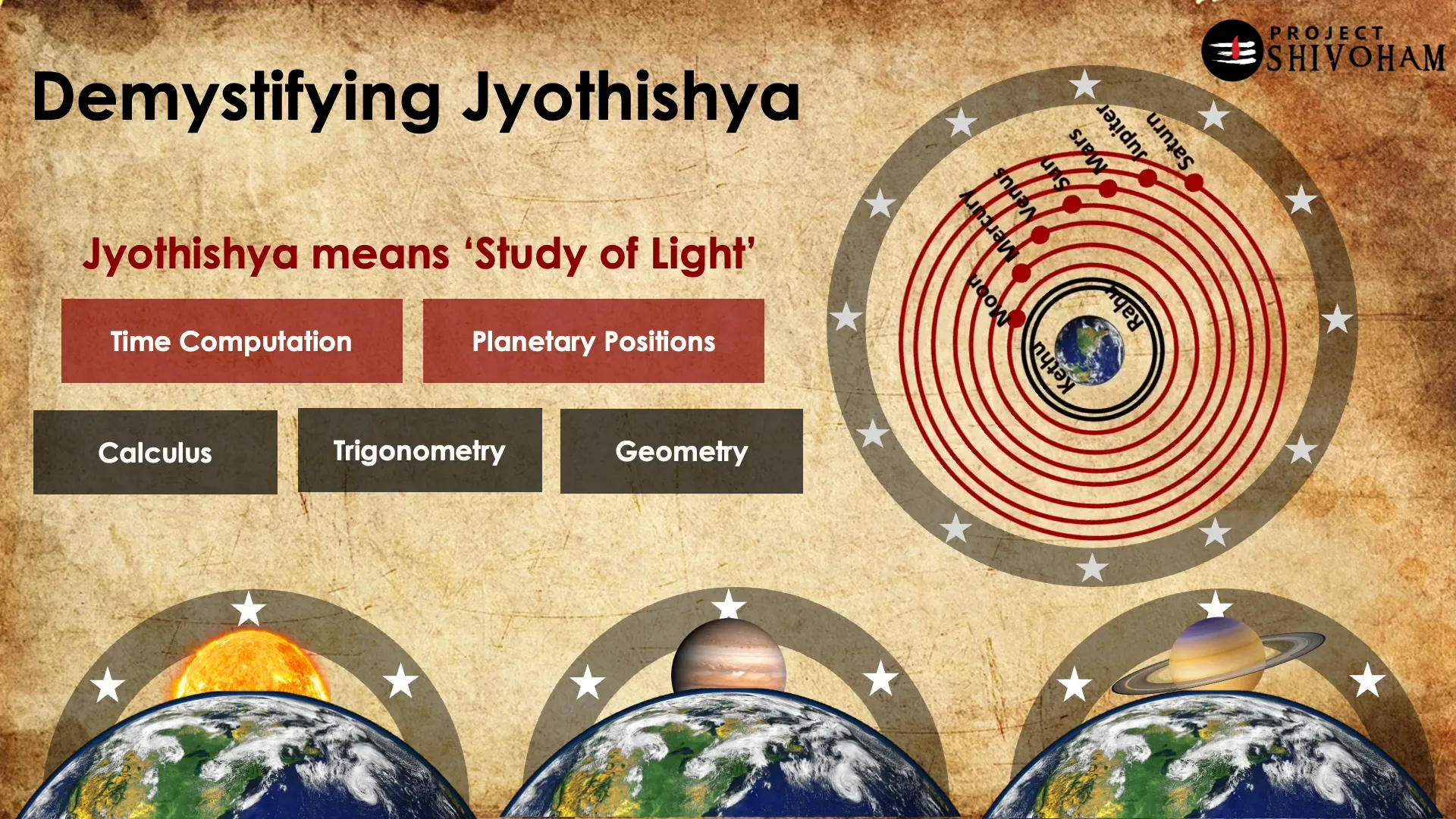
The Interplay of Faith and Mathematics
The interplay between faith and mathematics is a unique aspect of Bharat’s educational heritage. Many ancient texts reflect a belief that mathematical principles govern the natural world. This belief system promotes a sense of reverence towards mathematics, treating it as a divine language.
This understanding encourages students to approach mathematics with curiosity and respect, recognizing its role in explaining the universe. By fostering this mindset, educators can inspire a new generation to explore the depths of mathematical inquiry.
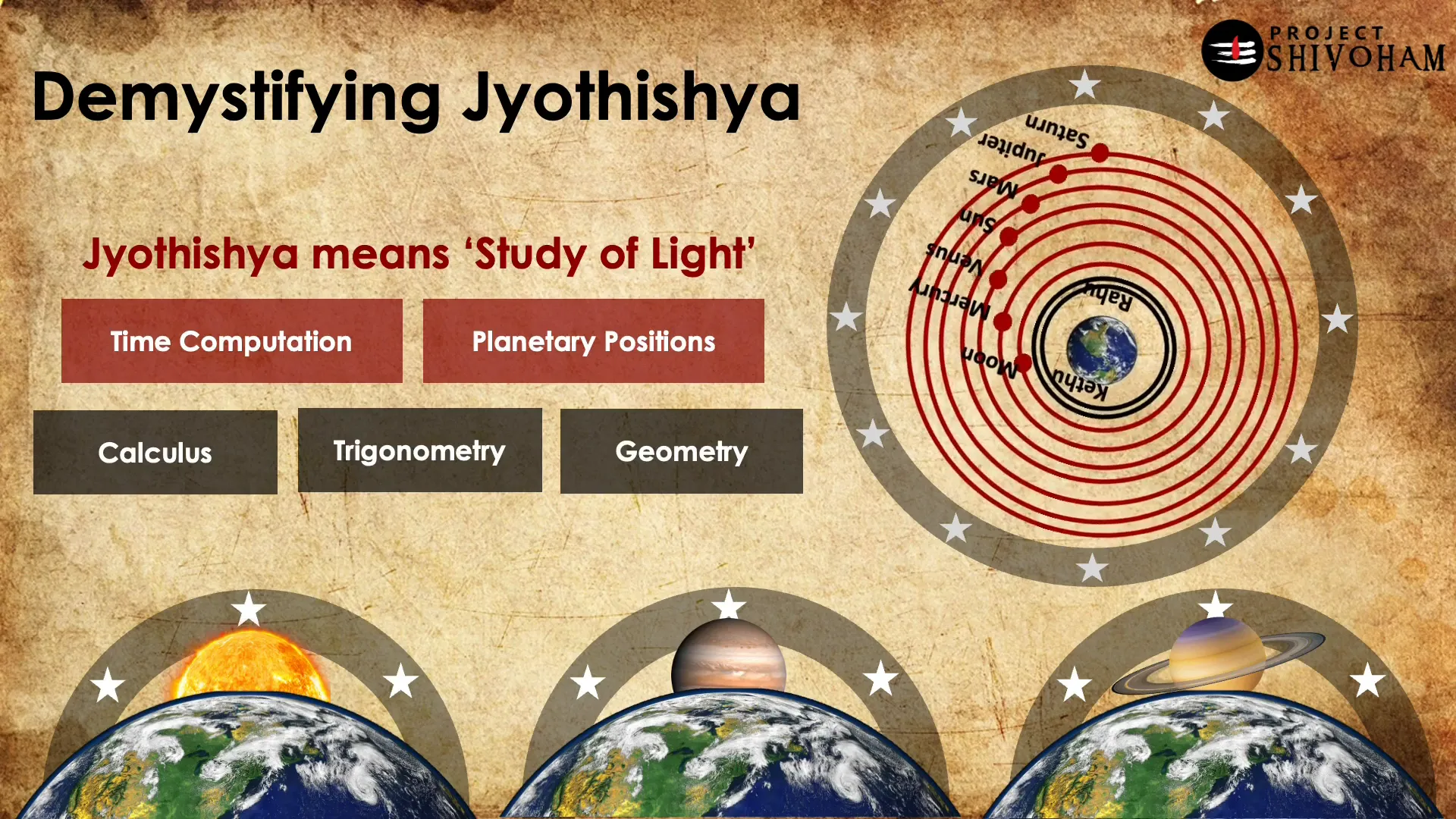
The Calculation of Navagrahas
The Navagrahas, or nine celestial bodies, hold significant importance in Indian astrology and spirituality. Understanding their positions and movements requires precise calculations, which are rooted in Ganita Shastra. Ancient scholars meticulously charted the positions of these celestial entities to predict auspicious times for various activities.
This practice not only underscores the mathematical prowess of ancient Bharat but also highlights the integration of mathematics with daily life and spirituality. The calculations of Navagrahas serve as a testament to the advanced understanding of astronomy and mathematics in ancient times.
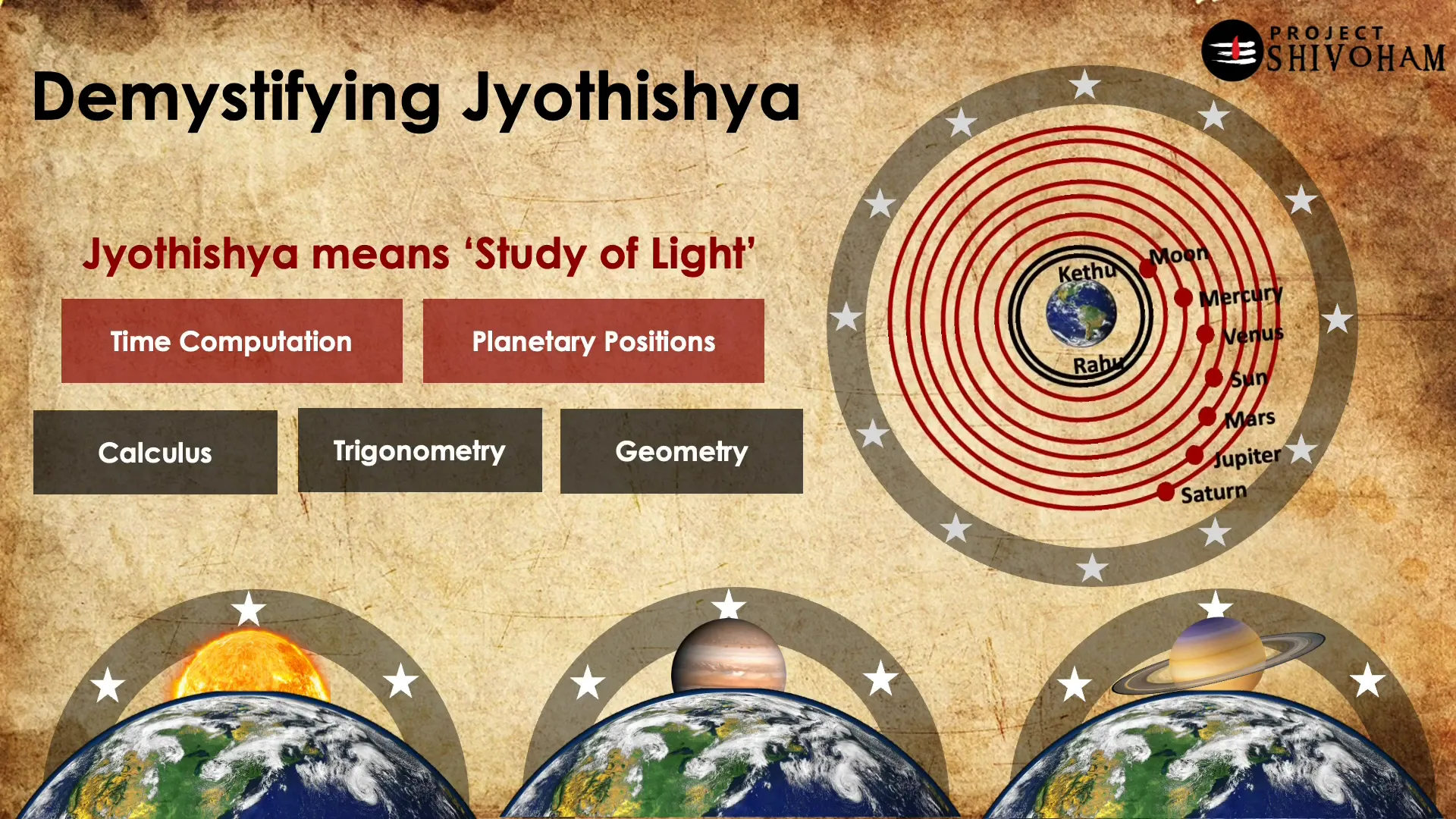
The Historical Context of the Hindu Number System
The Hindu number system, which is the basis for modern mathematics, has a rich historical context. Its development can be traced back to ancient texts such as the Yajurveda, where concepts of place value and large numbers were introduced. This system revolutionized calculations, making them more efficient and accessible.
Scholars like Aryabhata played a pivotal role in refining this system, ensuring its practicality for various applications. The historical journey of the Hindu number system illustrates the evolution of mathematical thought in Bharat, showcasing its global influence.
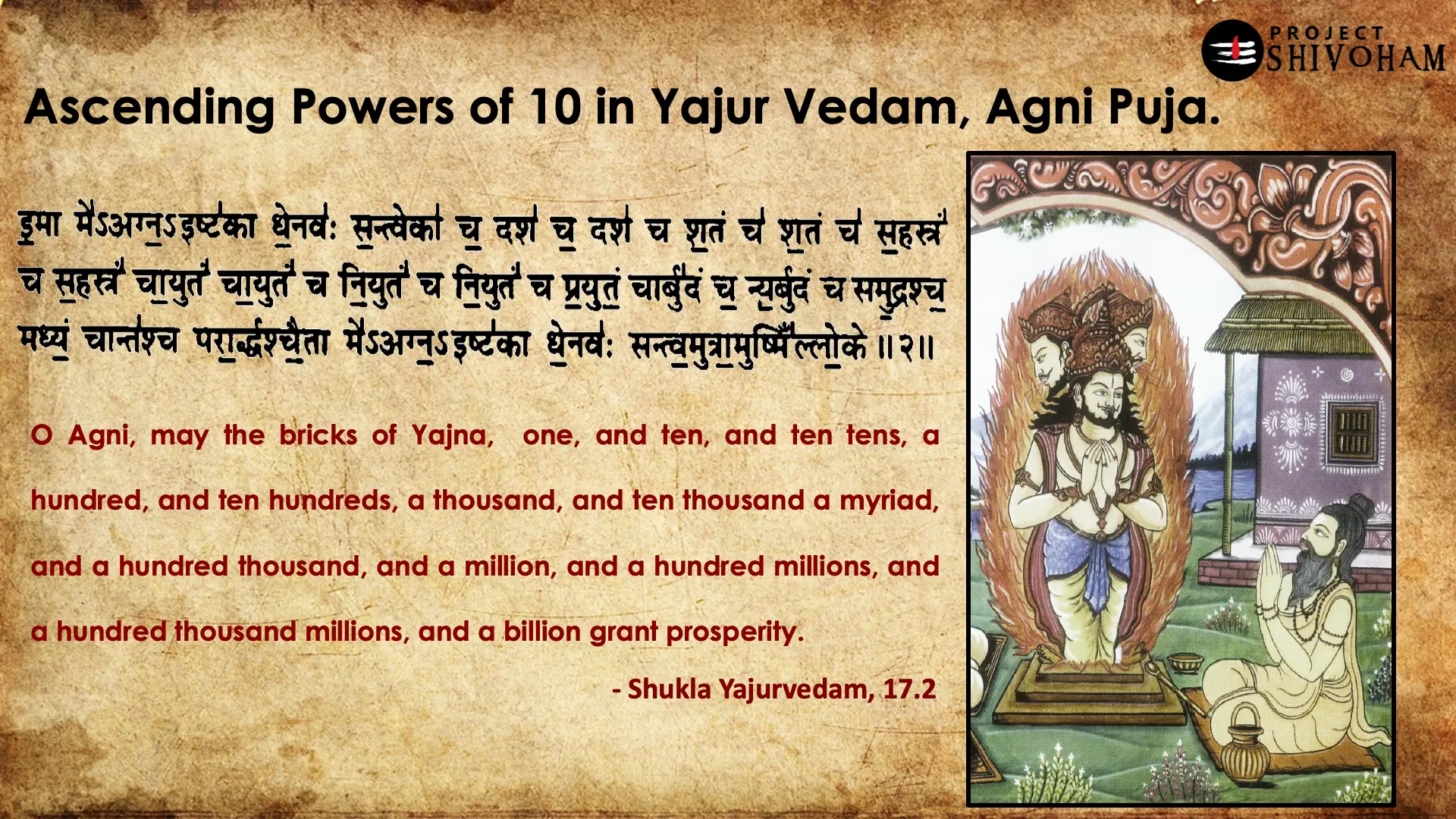
The Global Spread of Bharatiya Mathematics
Bharatiya mathematics, rooted in ancient texts and practices, has significantly influenced global mathematical thought. The journey of its concepts began with the establishment of a robust number system and advanced mathematical principles that traveled westward.
The Hindu number system, which includes the revolutionary concept of place value, was introduced to the world through scholars like Aryabhata. His contributions were pivotal, and as his works spread, they laid the foundation for modern mathematics.
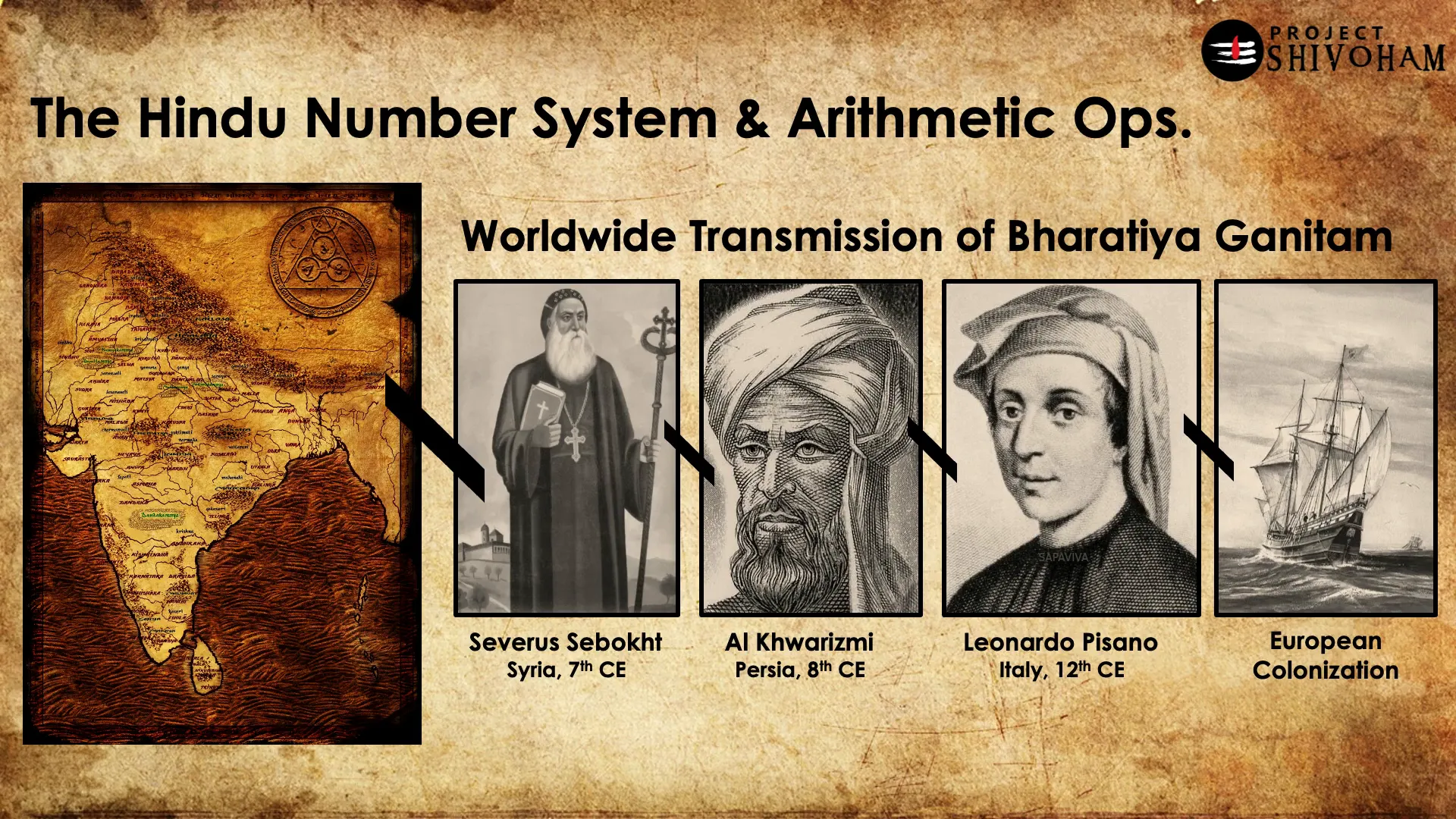
As these ideas permeated through cultures, they were adapted and expanded upon. The work of mathematicians such as Leonardo Pisano, known as Fibonacci, illustrates this exchange. His writings, influenced by Indian mathematics, introduced Europe to concepts that transformed their mathematical landscape.
Key Figures in the Global Spread
- Aryabhata: Credited with developing the place value system, Aryabhata’s work was foundational in the evolution of mathematics.
- Severus Sebokht: This seventh-century monk played a crucial role in introducing the Hindu number system to the Middle East.
- Al-Khwarizmi: His writings further disseminated Indian mathematical concepts, particularly in algebra.
- Leonardo Pisano (Fibonacci): His works brought Indian mathematical ideas to Europe, influencing the development of modern mathematics.
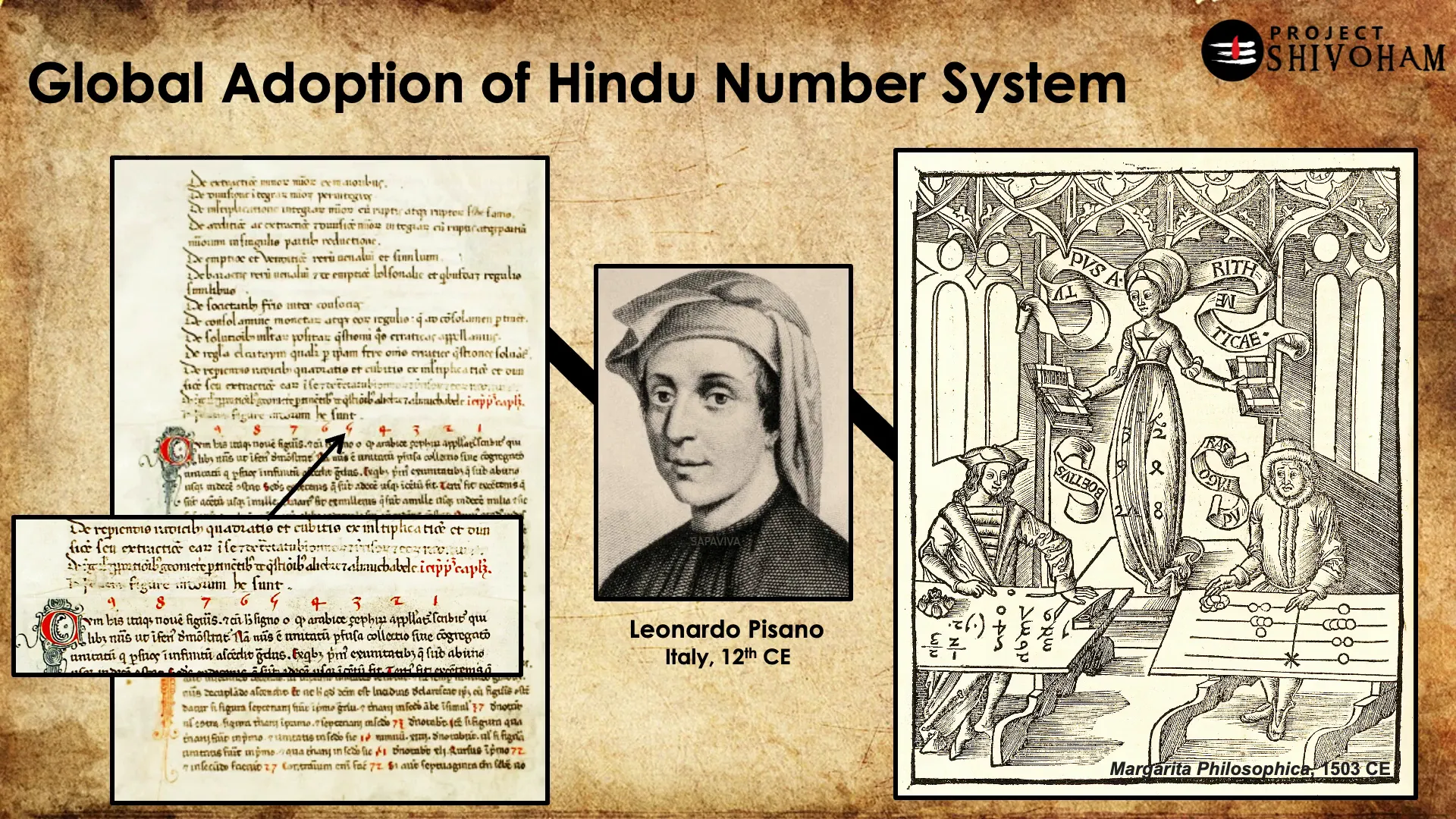
Myths and Misconceptions About Indian Mathematics
Despite its rich history, many myths and misconceptions surround Bharatiya mathematics. One common myth is the belief that India solely invented zero. While the concept of zero was known in various civilizations, it was the positional value system perfected in India that revolutionized mathematics.
Another misconception is that Indian contributions to mathematics have been overshadowed by Western advancements. In reality, the foundational concepts developed in Bharat have been integral to the evolution of global mathematics.
Dispelling Common Myths
- Myth 1: India invented zero.
Fact: Zero was known in other cultures; India’s contribution was the place value system. - Myth 2: Indian mathematics is irrelevant today.
Fact: Many modern mathematical principles are rooted in ancient Indian practices. - Myth 3: Bharatiya mathematics is only about calculations.
Fact: It encompasses a vast philosophical and spiritual framework.
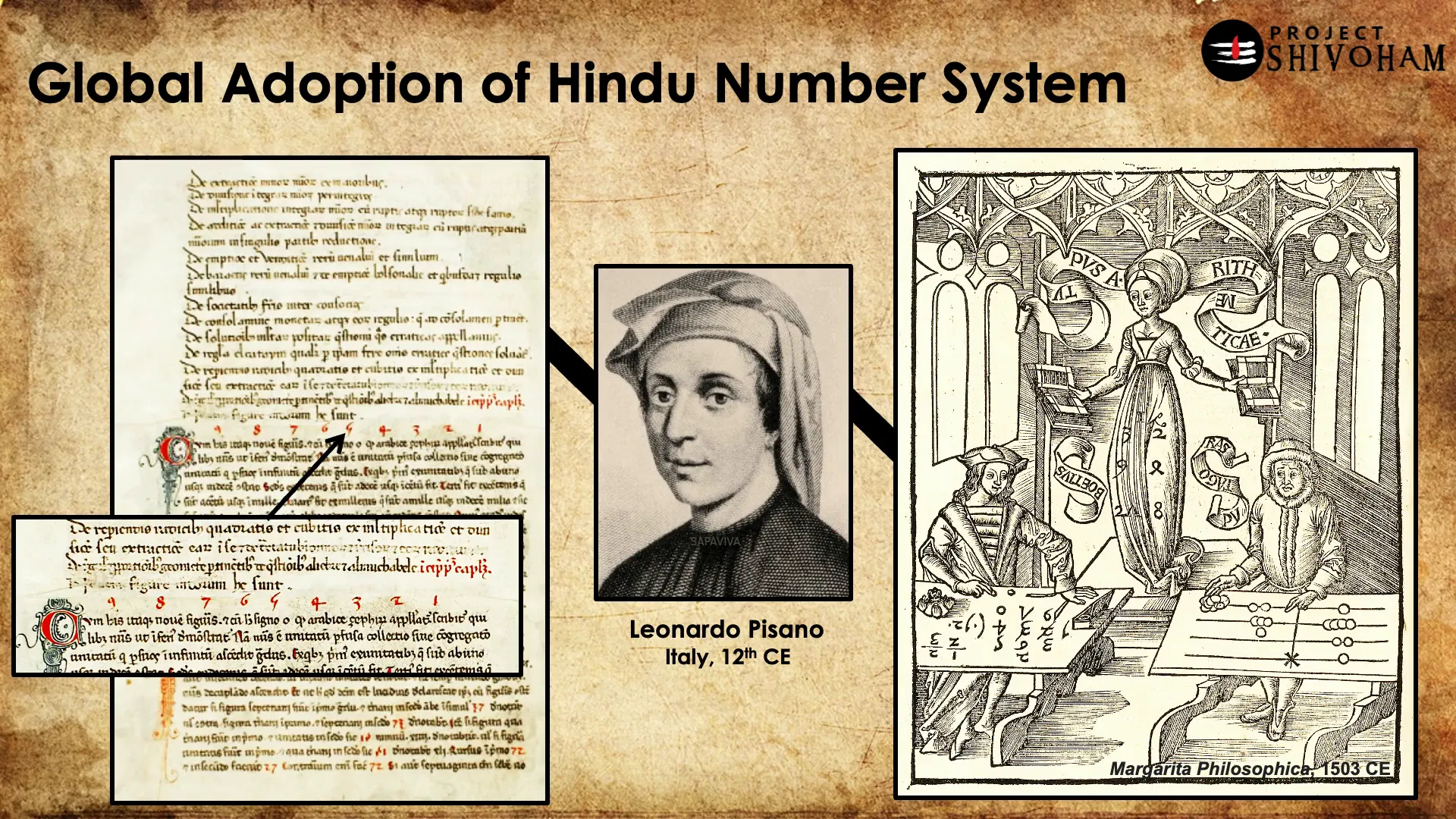
The Objective of Bharatiya Ganitam Series
The Bharatiya Ganitam series aims to illuminate the rich tapestry of Indian mathematics and its contributions to the world. By highlighting the work of ancient scholars and their innovative concepts, the series seeks to rekindle interest in this vital area of study.
Through engaging and informative content, the series aspires to educate and inspire a new generation of learners to appreciate the depth and breadth of Bharatiya mathematics. It emphasizes the importance of critical thinking and inquisitive learning in understanding these ancient concepts.
Goals of the Series
- To educate about the historical significance of Bharatiya mathematics.
- To highlight the contributions of key figures in Indian mathematical history.
- To encourage critical thinking and inquiry in the study of mathematics.
- To dispel myths and promote a more accurate understanding of Indian contributions to mathematics.
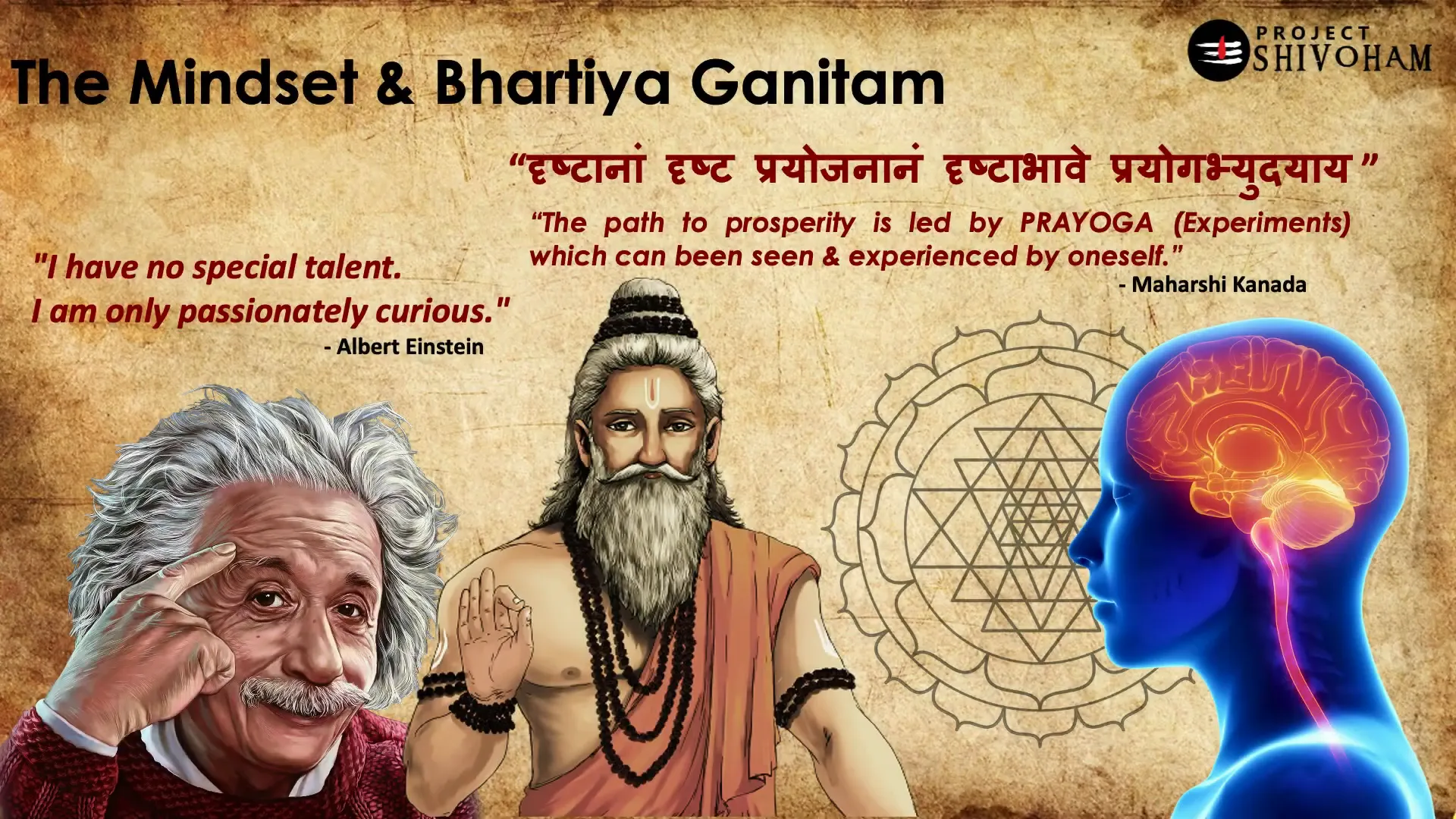
The Mindset for Understanding Mathematics
Understanding Bharatiya mathematics requires a shift in mindset. It is essential to approach the subject with curiosity and an open mind, free from preconceived notions. Developing a critical perspective allows learners to appreciate the philosophical underpinnings of mathematics as it relates to the broader context of human knowledge.
This mindset fosters a connection between mathematics and its applications in everyday life, encouraging students to see the relevance of these ancient concepts in contemporary society. It empowers them to explore and question rather than accept information passively.
Fostering a Curious Mindset
- Encourage questioning: Ask why concepts are important and how they originated.
- Emphasize connections: Relate mathematical principles to real-world applications.
- Promote exploration: Inspire students to delve deeper into the history and philosophy of mathematics.
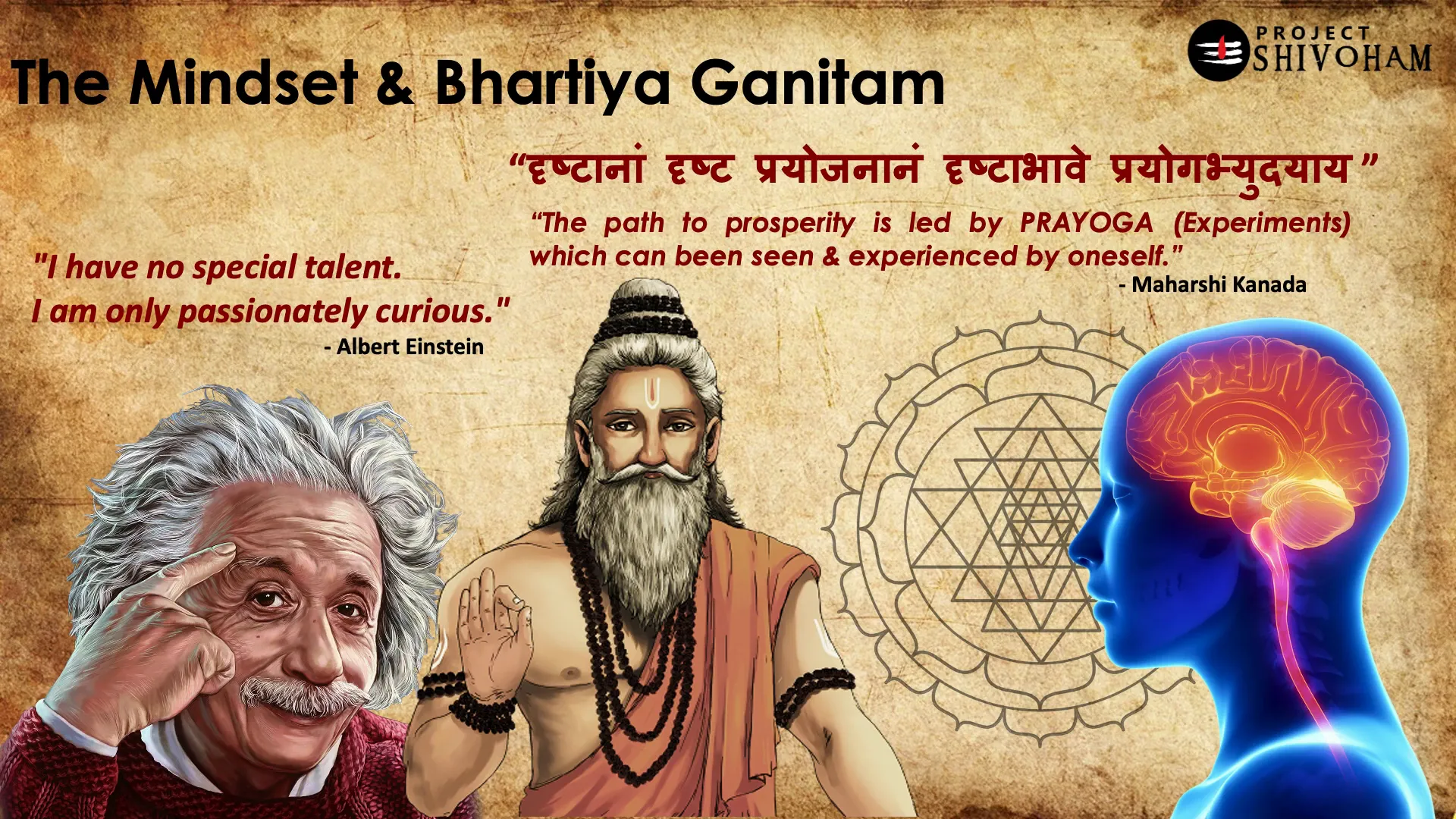
Critical Thinking and Inquisitive Learning
Critical thinking is paramount in the study of Bharatiya mathematics. This discipline encourages learners to analyze and evaluate information critically, leading to a deeper understanding of mathematical concepts. It fosters an environment where questioning and exploration are encouraged, allowing for a richer educational experience.
Inquisitive learning is about cultivating a genuine interest in the subject matter. It motivates students to seek answers and understand the “why” behind mathematical principles, rather than just memorizing formulas. This approach transforms mathematics from a mundane subject into a fascinating exploration of ideas.
Strategies for Encouraging Critical Thinking
- Incorporate problem-solving activities that require analysis and creativity.
- Facilitate discussions that challenge assumptions and encourage diverse perspectives.
- Utilize real-world examples to illustrate mathematical concepts in action.
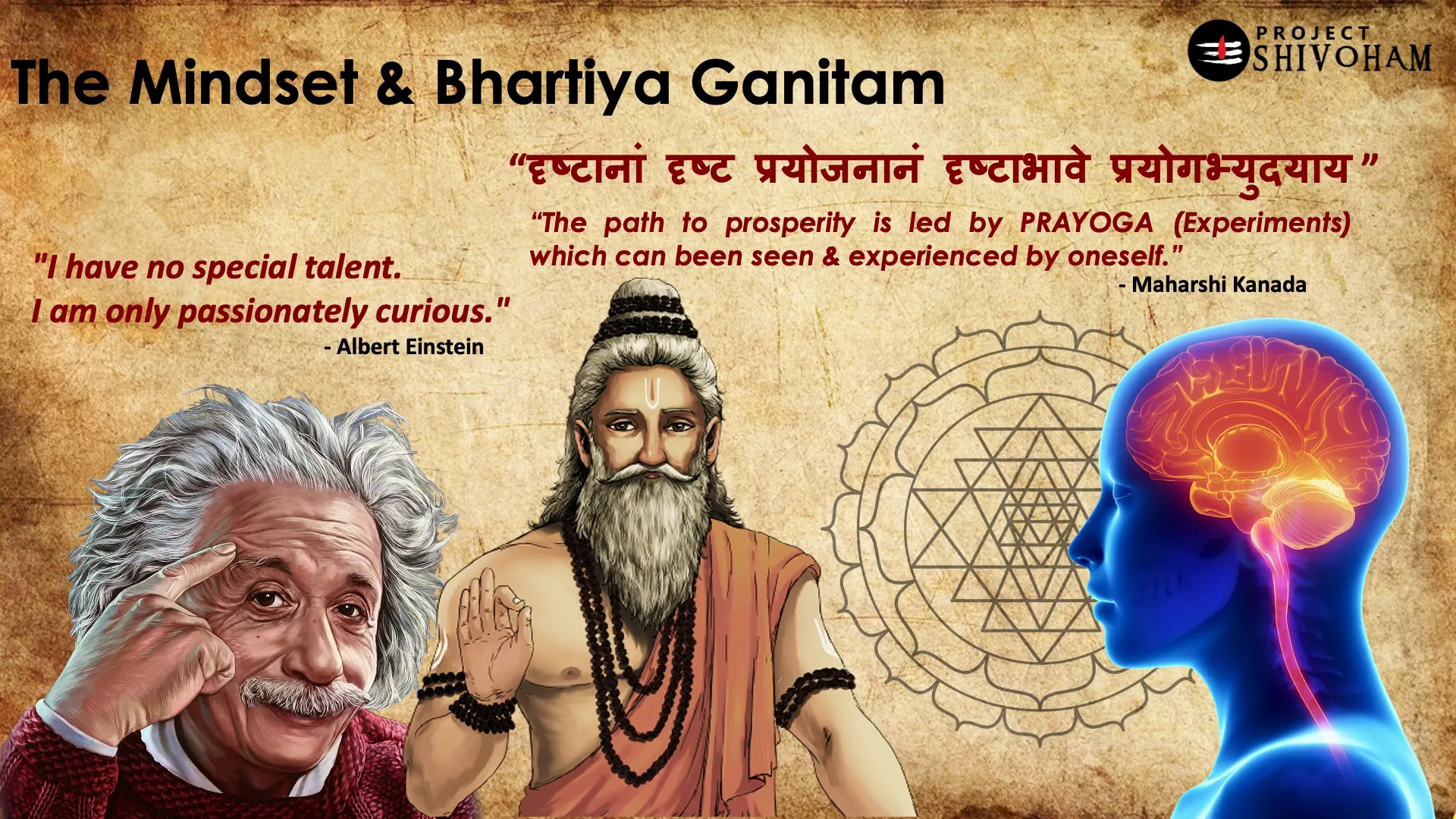
FAQs about Bharatiya Ganitam
What is Bharatiya Ganitam?
Bharatiya Ganitam refers to the ancient Indian system of mathematics, which encompasses a rich history of mathematical concepts, practices, and philosophies that have influenced global mathematics.
Who were some key figures in Bharatiya mathematics?
Notable figures include Aryabhata, Brahmagupta, Bhaskara, and Varahamihira, each of whom made significant contributions to various mathematical fields.
How has Bharatiya mathematics influenced modern mathematics?
The principles developed in Bharatiya mathematics, particularly the place value system and concepts of geometry, have been foundational to the development of modern mathematical practices worldwide.
Why is the study of Bharatiya mathematics important today?
Studying Bharatiya mathematics is essential for understanding the historical context of mathematical concepts, dispelling myths, and appreciating the contributions of diverse cultures to the field of mathematics.
